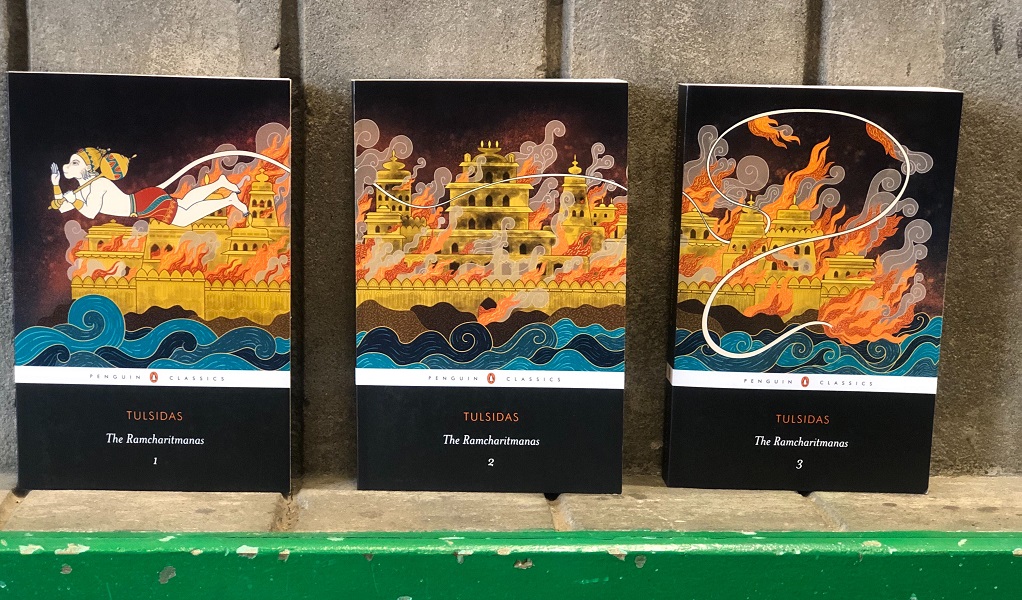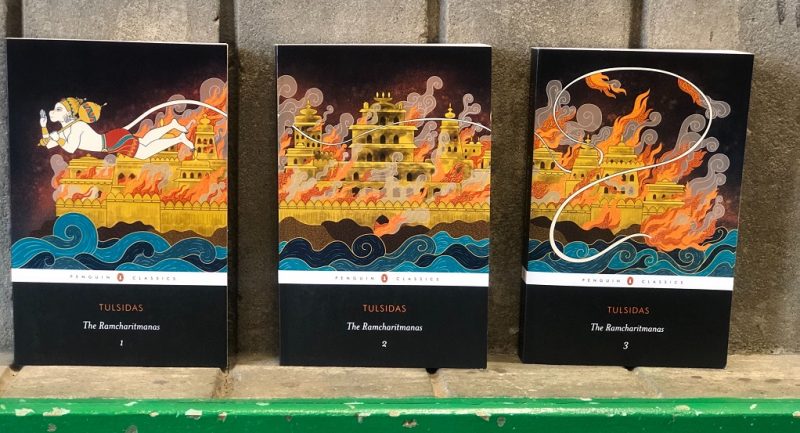
The Ramcharitmanas is one of the most popular and celebrated devotional texts in India. It’s cultural and traditional significance stands even today.
Composed by the poet-saint Tulsidas in the sixteenth-century during a period of religious reforms, this text was instrumental in making the story of Ram, his feats against Ravan, and the values he stood for accessible to the common people as opposed to just the priestly class.
Rohini Chowdhury’s latest translation of the magnum opus makes it even more accessible to a new and wide readership. The story and its teachings are as relevant as ever in the world today.
Read on to find an excerpt from Rohini Chowdhury’s introduction, in which she conveys the enduring significance of this text and why she decided to translate it:
My own engagement with Tulsidas began one crisp autumn night fifty years ago in a small town by the banks of the Ganga, when I saw my first performance of the Ram Lila. The sky was sprinkled with stars but I had eyes only for the drama unfolding upon the crude wooden stage before me, where the story had reached a critical point: Hanuman’s tail was to be set on fire. The sets were crude, the costumes garish, the acting unsophisticated— but the story transcended all such concerns, such was its magic and power. I did not know it then, but that was also my first intimate encounter with the Ramcharitmanas, upon which the Ram Lila is based. Growing up, Tulsi’s poem was always around me—chanted in the homes of friends or neighbours, sung on the radio, or the theme of plays and dance dramas. So when the opportunity came to translate it into English for Penguin India, I accepted it with alacrity—and the last five years that I have spent walking behind Tulsi, one of the greatest literary minds of all time, have been a pleasure and a privilege. My translation does not do justice to Tulsi’s extraordinary poetic genius. His use of wordplay, his rhymes and alliteration, and the sheer musicality of his poem I have found impossible to capture in English. I have therefore contented myself with being as clear and accurate as possible in my translation, and to convey, to the best of my ability, the scale and grandeur of his great poem.
The Ramayana tradition
For at least the last two and a half thousand years, poets, writers, folk performers, and religious and social reformers have drawn upon the story of Ram as a source of inspiration. It has been told again and again in countless forms and dozens of languages, making it one of the most popular and enduring stories in the world. More than any other hero, Ram has been upheld as dharma personified, the epitome of righteousness, and his actions as the guide for right conduct. In recent times, the story has provided inspiration for films, novels, and in the late 1980s, a weekly television series watched by more than eighty million viewers.
The oldest and most influential surviving literary telling of the story of Ram is the Sanskrit epic called the Ramayana. Composed sometime during the first millennium bce, and consisting of some 50,000 lines in verse set in seven kands or books, it is attributed to the poet Valmiki, and is widely regarded as the ‘original’. The influence of Valmiki’s Ramayana has been so profound that the title of his epic has come to denote the entire tradition, from oral and folk performances to literary texts and translations. Within this rich and varied tradition also lie the Ramayana songs from Telangana, the folk performances of the Ram Lila in northern India, the eleventh-century Tamil Iramavataram (‘The Incarnation of Ram’) by Kamban, and Tulsidas’s Ramcharitmanas.
Published across three volumes, this translation brings alive the story of Lord Ram like never before!









